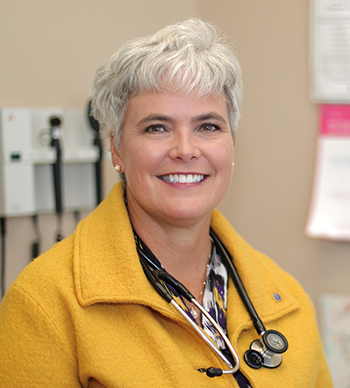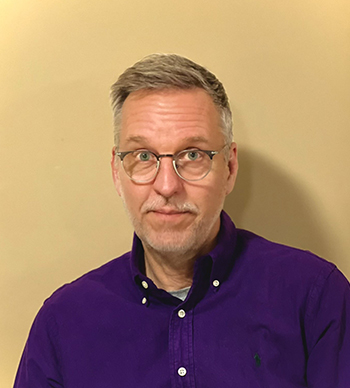
The 2021 National Physician Health Survey (NPHS) conducted by the Canadian Medical Association (CMA) reveals physician wellness challenges, including a high prevalence of burnout, anxiety, depressive symptoms and feelings of moral distress. The long hours, high pressure and emotional toll of caring for patients have exacerbated existing concerns around burnout, mental health, career satisfaction and financial stress among doctors.
Insights from the survey and physician interviews highlight the relationship between administrative burden and burnout. While not generally visible to patients and the public, the administrative burden of being a Canadian physician can consume time and energy exceeding the reasonable expectations of any profession, leading to a great deal of frustration. In this article, we profile Dr. Kathleen Ross, president-elect of the CMA, and Dr. Scott Elliott, chair of the Ontario Medical Association’s (OMA) Forms Committee. Both are primary care physicians passionate about tackling the administrative burden ingrained in our fractured health care system.
Moral distress underpins physician burnout
Previous articles covering the results of the 2021 NPHS have shared the perspectives of physicians and patients navigating a health care system stretched to the point of cracking. Physicians' burnout rates are exceptionally high — 1.7 times higher than in the years before the COVID-19 pandemic. However, burnout is not the only concerning indicator of how the medical profession has profoundly changed.
Seventy-nine percent of physicians scored “low” on professional fulfillment (i.e., feeling contentment and finding satisfaction and meaning in one’s work). As a result, it should not be surprising that almost half of physicians also expressed a likelihood to reduce their clinical hours over the next two years. Those most likely to do so are physicians experiencing burnout and low professional fulfillment.
Additionally, just over half of respondents said they feel moral distress at work (with 20% of physicians saying they frequently feel morally distressed and 33% feeling morally distressed sometimes). When asked to compare their mental health to pre-pandemic times, six in 10 respondents reported worsening mental health.
Dr. Kathleen Ross landed in family medicine almost 30 years ago and has witnessed a profound increase in the pressure physicians face today. “I built my practice around the joys of developing relationships with my patients because that fills my cup,” she says of her source of inspiration and motivation. “However, my ability to access care for patients has changed so drastically over the years that this has magnified feelings of moral distress in my work. When patients cannot access the care they need in a timely fashion, it is stressful for them and their families, as well as for us as their doctors.”
The inefficiency or inaccessibility of care can rapidly deteriorate the relationships physicians have spent years cultivating with their patients.
As the physician chair of the Pathways Patient Referral Association, Dr. Ross helped create an online resource of referral information about specialist, community and allied health services. British Columbia and the Yukon use Pathways to streamline and simplify the patient referral process through accurate, real-time search and submission capabilities.
Dr. Ross believes reducing the inefficiencies caused by inadequate access to knowledge of referral resources or processes, referral rejections or delays improves patient relationships and experience of care. Additionally, she feels that in-person touchpoints can help rebuild connections that may have been affected by the reliance on pandemic-era virtual care.
“When you can look into somebody's eyes, you can tell if they're less afraid or more hopeful than when they first came in to see you,” she says. “That is just simply something you cannot see on the telephone. And I think that has changed a little bit of the personal reward or fulfillment physicians would otherwise experience in daily practice,” she adds.
The need to adjust to radical shifts brought on by the pandemic pushed physicians and their patients into challenging territory. From having to separate expectant mothers from their partners in routine prenatal care to dialling in translators via telephone or delivering bad news virtually, Dr. Ross was profoundly affected by the evaporation of the human-to-human connection.
“It changed the dynamic for quite some time and led us to work more in a culture of fear than a culture of caregiving,” she says. “That lack of ability to hold a hand or pass the Kleenex to dry the tears has an impact on us as doctors, too.”
In line with many of the sentiments captured in the NPHS, Dr. Ross shifted her practice during the pandemic and has since handed her community patient panel to a new doctor.
“Many of my colleagues decided that they had sacrificed enough on the altar of medicine and chose to decrease their hours or limit their practice in one way or another,” she observes. Dr. Ross is now focused on primary care maternity care.
Although most clinicians she knows did not retire outright, many did shift their hours and availability to put new boundaries in place. Rather than picking up additional hours or staying late at the end of the day, they prioritized self-protection and well-being over ongoing exposure to burnout.
“In the early days of the pandemic, it may have felt good to have the recognition of your neighbours as they banged their pots and pans in appreciation of front-line workers. But it also put physicians on a fairly high pedestal,” she explains. “Personally, I felt responsible for ensuring all my neighbours were well and had access to what they needed. But as the pandemic wore on and our health human resources dwindled, health care providers slid off that pedestal.”
The expectation to provide care within the confines of a fractured health system isn’t a new problem. Instead, the pandemic magnified the challenges of accessing care and mounting inefficiencies by squeezing providers even more.
Hitting the wall on physician administrative burden
The administrative burden physicians face has grown dramatically over the past several decades. The number of forms to complete for referrals, whether for a diagnostic test or to a specific physician, contributes to preventable delays in arranging care.
“Additionally, we're now playing catch-up with chronic disease screening or managing critical illnesses that people were too afraid to get care for during the pandemic,” explains Dr. Ross. “Or we’re trying to catch up on routine childhood vaccinations that are falling behind and causing re-emerging diseases like pertussis and measles to crop up once again.”
Dr. Scott Elliott is a family doctor in Ontario who champions administrative excellence and efficiency. As the chair of the OMA’s Forms Committee, he leads the planning and building of systems and processes that strive to deliver better patient care. Sometimes these systems and processes are developed from scratch; in other cases, existing systems and processes are tweaked to focus more on efficiency and patient experience.
“I think that tackling the administrative burden for physicians means recognizing that there are alternative ways of doing business as the system evolves,” he explains. “That requires physician input.”
While the health system is legacy driven and entrenched, Dr. Elliott believes having more physicians at the table will change thinking and culture. “We've hit the wall, and I think everyone sees that,” he says.
Between accelerated retirements and changes in clinical hours, the conversation about burnout and systemic change is louder than ever.
“You could even go into the terms of matching where family medicine still has open spots and has had them for the last few years,” he says.
“We’re seeing the new generation saying to themselves, ‘Why would I want to go down this road?’”
For family medicine residents, training in a team-based environment offers precious resources that vanish if the graduate does not land in a team-based environment. “They may have to go fee for service. On the other hand, they may be lucky and get into a capitated system. There are so many variables that don't acknowledge that they were brought through the system in one way, but then they're left to fend for themselves,” explains Dr. Elliott.
“If you're a fee-for-service individual running their own office with one secretary and one nurse or support person, what happens when that person takes time off? What happens if they get sick? What happens if they get a better offer and move on?” he illustrates.
It is not a problem unique to family practice.
“Remember that physicians are not trained to be businesspeople,” he adds. “We were never trained to do payroll.”
As Dr. Elliott built his practice, he started associating with other physicians, and they began sharing the administrative load. He says one person took on the payroll, one took on human resources and another took on the bills. They operated as fee for service for many years before becoming capitated.
Another area of administrative burden physicians face is managing reports and electronic medical records (EMRs). “Everybody carbon copies everybody,” says Dr. Elliott. “So, the question becomes, who is actually dealing with it? If the specialist did the scan and the scan says it requires follow-up, is that specialist following up? Is that my job, or is that their job?”
Dr. Elliott explains that while EMRs are a repository of a tremendous amount of information, the big challenge is managing that information and the communication that goes along with it. He believes the magnitude of administrative issues in the health system must be tackled head on.
“The administrative side of medicine is quite open to working with and hearing from physicians to steer a better way of doing things,” says Dr. Elliott. “There is no other way to break down the wall we’ve hit.”
Rallying the motivation to transform the health system
During the pandemic, Dr. Ross witnessed firsthand how easily roadblocks could be lifted when all sides of the health system rallied around the same goal. She served as the president of Doctors of BC, was the president of the medical staff at her local hospital and managed the expansion of the Pathways Patient Referral Association resource to share information on how to access care. “The pandemic definitely showed us that with the appropriate level of motivation, all levels of government, administration and front-line workers could come together and be creative and nimble in how we managed our challenges,” she explains.
She says shared challenges either built up or shored up relationships. However, she is unsure that this collaborative spirit will continue after the pandemic.
“I think hierarchical structures end up returning to hierarchical structures once the crisis is resolved,” she admits. “We talk about old ways and new ways of doing things — the old way is top-down. And the pandemic shook things by driving solutions from the bottom-up.”
She hopes that health systems can incorporate change management to retain creativity and innovation, for example, by harnessing the skill sets of all health care providers, including family members and caregivers, who had to upskill or step into new roles in a time of unprecedented need.
“It would be a waste of a good crisis if we don't continue to expand those roles and work collaboratively,” says Dr. Ross.
This is a nod back to the team-based care approach. Dr. Ross believes this is the way of the future for Canadian health care, particularly because it will positively impact all providers' well-being.
“A team can split up looking after a patient’s needs to cover more ground — a nurse can give a vaccination, a social worker can help navigate the system, a psychologist can support counselling,” she illustrates. For Dr. Ross, team-based care is not about shuffling patients off to other providers; it’s about working together and sharing responsibility to ensure we meet all the patient care needs.
Dr. Elliott further characterizes the unrealistic expectations placed on physicians to do all and be all and how this is harmful.
“We do not expect first responders to function without appropriate safety equipment and supports. To do so would put both them and those they serve at great risk. Why do we not provide the same system supports for physicians and those they serve? The dialogue has started but there is an urgency to find sustainable solutions.”
Dr. Ross and Dr. Elliott see a tipping point where improvements and systemic changes are necessary. New ways of doing and being will re-energize the health system and those who carry its now-excessive weight on their shoulders. Solving the administrative burden is just part of the equation to move the needle on physician health and well-being.
Download the complete reports of the 2021 National Physician Health Survey.
Topics
Physician health and wellness data COVID-19 wellness resources Burnout Leadership and professional development Measurement and outcomes Organizational wellness Stress
Are you in distress? Get help now.


